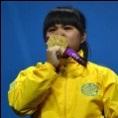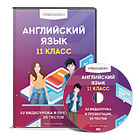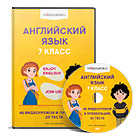Цель урока: расширение лингвострановедческих знаний и навыков учащихся по теме «Юбилейные события в Англии».
Задачи:
развивать навыки и умения в реализации речевой деятельности;
закрепить лексику по теме «Спорт», «Англоязычные страны», «Британская монархия»,
генеалогическое древо королевской семьи;
развивать способности к сравнению, умозаключению, развитие оперативной памяти, лингвистические способности учащихся;
способствовать развитию аналитического, критического и образного мышления через использование творческих заданий;
воспитание чувства доброжелательного отношения к окружающим через создание эмоционально-положительной атмосферы на уроке.
Технологии, методы и методические приемы: интерактивный, критическое мышление, групповая работа, словесный (беседа), наглядный (презентация, видео-материал, карточки), репродуктивный (запоминание информации), устного контроля (постановка вопросов в определенной логической последовательности, постановка наводящих вопросов), создание ситуации занимательности.
Оборудование: мультимедийные средства: интерактивная доска, компьютер, презентация, видео-материал, музыкальное сопровождение, песня «A time for us»; раздаточный материал, оценочные карты, материал для психологического настроя и рефлексии: веточки с деревьев, разноцветные листья и цветы
Тип урока: креативный
Форма урока: урок - путешествие
Ход урока:
- Мотивация учебной деятельности
- Психологический настрой
Good morning children and our dear guests. I’m very glad to see you. How are you today? I think everything is OK. Are you ready to start our lesson?
I want to draw your attention to the lonely trees on your tables. You know that it’s winter now, and all flowers have already faded, leaves have fallen down. But there are green, red, yellow and blue leaves on your tables. I want you to take one of them and cover your trees with colourful foliage. (Дети украшают веточки деревьев разноцветными листьями)
Children with green leaves will be successful at our lesson.
Children with red leaves will be communicated.
Children with yellow leaves will be very active.
Children with orange leaves will be persistent.
- Remember that the beauty of your tree depends on you, your activity, your expectation.
But today I won’t give you marks, you will be estimating yourselves. Pay attention to your right answers, activity, capacity for getting on with others, pronunciation. At the end of our lesson you will count your marks.
2. Речевая разминка
- Look at these photos, please. You can see some people there. Some of them are real persons, some are literary heroes that have never lived in real life. But who are they? What is common in them? (Слайд 1- фотографии реальных и вымышленных путешественников)
- Now I want to draw your attention to the blackboard where John Clarke’s quotation is written: “He that travels far knows much”(Слайд 2).
- Let’s try to prove that Clarke was really right. What do you think about this quotation? How do you understand these words? What’s your opinion? But I want you to start your replies with the following expressions: I think…,To my mind…, In my opinion…, It seems to me…. (Слайд 3- учащиеся высказывают свое мнение о цитате Дж.Кларка, используя предложенные варианты начала предложений)
- How do you think, why did I begin our lesson with this quotation?
- Maybe we shall travel today?
- Yes, you are quite right. We shall make an imaginary trip to one of the English-speaking countries. By the way, what English-speaking countries do you know? (Great Britain, India, New Zealand, Australia, Canada, the USA, some African countries)
3. Кроссворд «Англо-язычные страны»
- As you’ve guessed, today we are going to speak about an English-speaking country. But which one? Look at the blackboard. You can see a crossword puzzle there. (Слайд 4- кроссворд) - смотрите документ
Let’s watch video, listen some passages describing different countries. Try to guess what country is spoken about. Write down the answers into the crossword puzzle. If the answers are correct, you’ll find the name of the country we are going to visit today. (учащиеся слушают задания и отгадывают кроссворд, записывая правильные ответы на доске)
(Слайды 5, 6- изображения, связанные с музыкальными и поэтическими состязаниями Айстедфод в Ланголене ) This country has always been known as a country of poetry and music. Since the 12th century special competitions have been held to find the best writers, poets, musicians in the country. The national word for such a competition is Eisteddfod. Every year Eisteddfod is held in the town called Llangollen. People from all over the world recite poetry, sing and dance in this colorful competition. What’s the country? (Wales)
- What can you say about Wales? (ответы учеников)
(Слайд 7- видеоролик пейзажей Шотландии, с музыкальным сопровождением национальной мелодии) This country is the most northern part of Great Britain. The capital of this country Edinburgh is its political and cultural centre as well as the centre of government and commercial life. It’s a country of hills, lakes and swift rivers. What country am I talking about? (Scotland).
- What do you know about Scotland? (ответы учеников)
(Слайд 8 – изображения стран, флагов, национальных символов-эмблем Объединенного Королевства) The total population of this country is about 60 mln people. It is inhabited by the English, the Scots, the Welsh, the Irish and many other nationalities. English is the official languages of the country. It consists of four parts and every part has its national emblem.
- What’s the country? (The United Kingdom of Great Britain and Northern Ireland)
- What do you know about it? (ответы учеников)
4. (Слайд 9- видеоролик с музыкальным сопровождением о пейзажах Австралии) This country is situated in the southern hemisphere. It is often called “upside down world”. It is famous for the strangest native animals: the platypus, the echidna, the kangaroo, the koala, the dingo. What country is this? (Australia)
What do you know about Australia? (ответы учеников)
– I won’t say anything about this country. Just watch the video. (Слайд 10- шуточный мультфильм о герое Б.Обама, спасающем страну)
What country is this? (the USA)
What can you say about the USA? (ответы учеников)
(Слайд 11- изображения достопримечательностей и национальной эмблемы- птицы страны) This country has very few native animals. The national emblem is a bird which lives in the forest and does not fly. It comes out only at night to find food. It has no tail, almost no wings, and its nostrils are situated near the end of its bill. No other bird lays an egg so large in proportion to its size (almost one fifth of its own weight).
What is the bird? And what’s the country? (New Zealand)
What can you say about New Zealand? (ответы учеников)
(Слайд 12- изображения индийских храмов и танцующих девушек с музыкальным сопровождением) Listen to the music. What country is it? (India)
Tell me something about this beautiful country. (ответы учеников)
(Слайд 4 с ответами)
Read the name of the country you have found. (England)
- Объявление темы урока и заполнение кластера.
You are right. It’s England. And today at our lesson we are going to visit England.(Слайд 13- кластер)
What do you know about England? How do you think why it is worth seeing?
(учащиеся отвечают на вопрос и заполняют пустые рамки кластера на доске )
- But what can you say about the British Queen? (ответы учеников)
- Thank you. But I want to add some more information about Elizabeth II.
It’s not by accident we are talking about her at our lesson. This year is jubilee for English people. That’s why the theme of our lesson is “Jubilee glimpses of England” (Слайд 14). Englishmen celebrated some important events; the most important one was connected with Elizabeth II. The Queen, whose actual birthday is in April, celebrates her official birthday too.
II. Практическая отработка материала
- «Queen Elisabeth II’s diamond jubilee»
- Look at the screen. You can see the date ‘February, 6, 2012’ – it’s the diamond jubilee of Elizabeth II’s reign (Слайд 15). That means that that very day 60 years ago Elizabeth-Alexandra-Mary was proclaimed the Queen of the UK of Great Britain and Northern Ireland. She became Elizabeth II at the age of 25 after her father’s death.
- If you look at the photo of this beautiful elegant lady you can say that she is very weak and gentle as all women seem to be. But she is a strong person, very popular and much respected all over the world.
Работа в группе с текстом «A typical day in the life of the Queen of England» (учащиеся в группах читают и обсуждают предложенный текст, затем выполняют задания, в это время на экране слайды с изображениями королевы с музыкальным сопровождением – Слайды 15-18) – приложение 1
Выполнение заданий в группе после прочтения текста – приложение 2
Расположить предложения в хронологическом порядке согласно тексту (задание для группы 1)
Now after your reading the text, order the Queen’s actions chronologically
Задание «Верны/неверны утверждения» (задание для группы 2)
Say if the following sentences are true or false. Justify quoting from the text.
Задание «Ответь на вопросы» (задание для группы 3)
Now answer the questions
1.3. Составление семейного древа королевской семьи.
Now I want you to make the British Royal Family Tree. (Слайд 19 – королевское древо – учащиеся с помощью мышки на доске перетаскивают фотографии членов королевской семьи к их именам)
Задание для талантливых и одаренных учащихся (3 учащихся выполняют подобное задание, но повышенной сложности с помощью интернета в сотовых телефонах) - приложение 3
- The next task will be only for some of you. You should complete the given sentences with the help of Internet in your mobile phones.
“Olympic Games in London”
Беседа по теме «Олимпийские игры»»
Now look at the screen again (Слайд 13). Do you see the date ‘July, 27 – August, 12, 2012’. Who knows what does it mean? What event was on that day? Maybe somebody watched or heard about it on TV?
It was the date when the Olympic Games were held in London. This was the 3rd time when London celebrated this important event. (Слайд 20)
Let’s remember some symbols of the Games. What are they?
They are the Olympic Flag, the motto, the mascots. (Слайд 21)
You are quite right. Look at the Olympic Flag and describe it.
- The Olympic flag has a white background with no border. In the centre there are placed five interlocked rings. Each ring represents one of the five continents: blue is for Europe; red is for America; yellow is for Asia; green is for Australia; black is for Africa. (Слайд 22 – изображение олимпийского флага)
Who knows the motto of the Olympics?
The motto of the Olympics is “Faster, higher, stronger”.
Yes, it is “Faster, higher, stronger” or its Latin origin “Citius, altius, fortius” (Слайд 23).
Each country of the Games chooses a mascot (Слайд 24). For example, Bear Misha in Moscow in 1980, a cartoon dog Cobi in Barcelona in 1992, etc.
Winlock and Mandeville were the new faces of London Olympic Games: Winlock for the Olympics and Mandeville for the Paralympics.
- Проверка лексического материала по теме «Спорт» с переводом на казахский язык
The Olympic programme includes a lot of sports.
Will you name the kinds of sports I am going to show you? But your task is not only to name the sports in English but to give their equivalents in Kazakh. (Слайд 25- учащиеся смотрят картинки с видами спорта, называют вид спорта на английском языке и дают его эквивалент на казахском языке )
- Задание «Собери олимпийскую сборную РК»
It goes without saying that sportsmen from Kazakhstan also took part in the Olympic Games in London. But I am especially proud of the fact that 9 sportsmen from our oblast took part in the Olympic Games in different kinds of sport: athletics, wrestling, swimming, cycling, boxing. Kazakhstan left London with a total of 13 medals (7 gold, 1 silver, and 5 bronze)
And now your task is to match the Olympic winners’ photos with their names, sports they took part in and medals they won. (Слайд 42 – учащиеся получают карточки: фотографии олимпийских чемпионов, фамилии, 3 вида медалей, виды спорта и должны соединить их вместе; на экране в это время показан клип на песню «Чемпионы», звучавшую на Лондонской Олимпиаде) – приложение 4 (ответы)
- «Уильям Шекспир»
Now look at the third date of our chart (Слайд 13).
I will read you some sentences about a well-known person (Слайд 58). Try to guess who I’ll be speaking about. After that you will be able to discover the last date in our chart.
It is impossible to speak about the English literature without speaking about this author.
He was the brilliant poet, the marvelous dramatist, the greatest of the great. He was not of an age, but for all time. People called him “The National Bard”, “The Immortal Poet of Nature”.
To be, or not be, that is the question:
Whether ‘tis nobler in the mind to suffer
The slings and arrows of outrageous fortune,
Or to take arms against a sea of troubles
And by opposing end them.
Быть или не быть - таков вопрос;
Что благородней духом - покоряться
Пращам и стрелам яростной судьбы
Иль, ополчасъ на море смут, сразить их
Противоборством?
You are speaking about William Shakespeare (Слайд 58- фото У.Шекспира).
Yes, it’s about William Shakespeare, I am sure Shakespearian words “To be or not to be…” are known by everybody. But I think you don’t know why I decided to remember him at our lesson. Of course William Shakespeare is known all over the world, he was a great person, poet, actor, playwright. But the reason we are talking about him is that April, 23, 2012 was the beginning of the International Shakespearian Festival in London. All his 37 plays were performed in 37 different languages to mark the London Olympics.
3.1. Паззл «Найти слова, связанные с Шекспиром»
- Look at the next slide. You can see the puzzle, all words from which are connected with Shakespeare’s life and biography. Your task is to find 10 words. (Слайд 59 – учащиеся выделяют найденные слова, связанные с У.Шекспиром на доске разным цветом) – смотрите документ
(Sonnet, Hamlet, comedy, tragedy, Stratford, William, Shakespeare, Othello, Macbeth, Globe)
3.2. Декламация сонетов У.Шекспира
- You see that Shakespeare wrote tragedies, comedies, plays and sonnets. I’d like to speak about his sonnets. They are very popular and loved by people. All of them were translated into different languages. As for me I like them very much, especially in S.Y.Marshak’s translation. Our girls prepared to read one sonnet they liked more in English and in Russian. Listen to them! (учащиеся читают сонет 130 и его русский вариант в переводе С. Маршака)
When these children were in the 9th form we read some Shakespearian sonnets. And they translated them into Russian, now let’s listen to Shakespearian sonnet in our pupils’ translation.
Глаза ее совсем на солнце не похожи
И алость губ с кораллом не сравнить,
Белее снег, чем цвет ее груди
А волосы как проволока грубы.
Я видел много алых, белых роз
Но их не вижу на ее ланитах.
И в мире много ароматов есть,
Но запах ее слаще и сильней.
Мне речь ее мила,
Хоть тембр музыки приятней.
Когда ступает госпожа моя
Мне ясно: то походка не богини.
И все ж, о небо, ни к чему сравненья-
Любовь моя, ты - редкое явленье.
3.3 Релаксация
Shakespeare’s sonnets are very musical. And there are many songs and romances on his words. Many famous singers in different countries sing them in different languages. Today I want you to listen to one of them. (Слайд 61 – прослушивание песни на слова У.Шекспира в исполнении Э.Уильямса )
The song ”A time for us”(Andy Williams) – приложение 5
III. Домашнее задание
Group 1 – test questions “Royal Family”
Group 2 – mini project “Olympic Games”
Group 3 - crossword “W. Shakespeare”
IV. Оценивание
Now, when our lesson is almost over, I’d like you to express your attitude and mood to the lesson with the help of colourful flowers on your tables and give your self-assessment. (дети подсчитывают свои баллы в оценочной карте и оценивают свою работу на уроке с помощью критериев оценивания)
V. Рефлексия “Букет настроений” (Слайд 63 – классификация цвета - дети составляют букет из разноцветных цветов согласно классификации цветовой гаммы) – приложение 6.

 Получите свидетельство
Получите свидетельство Вход
Вход




 hat do you know about England? How do you think why it is worth seeing?
hat do you know about England? How do you think why it is worth seeing? 















 Урок по страноведению "Jubilee glimpses of England" (0.33 MB)
Урок по страноведению "Jubilee glimpses of England" (0.33 MB)
 3
3 980
980 103
103 Нравится
0
Нравится
0


